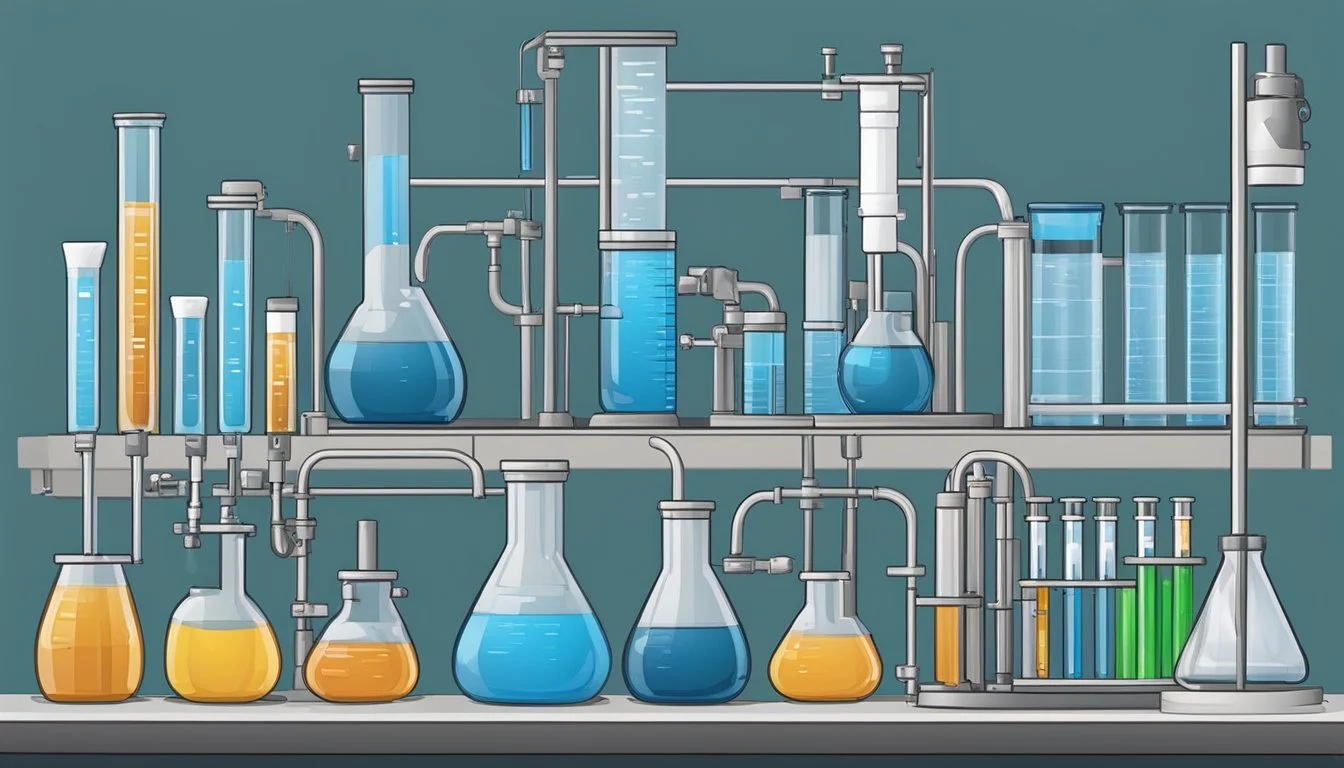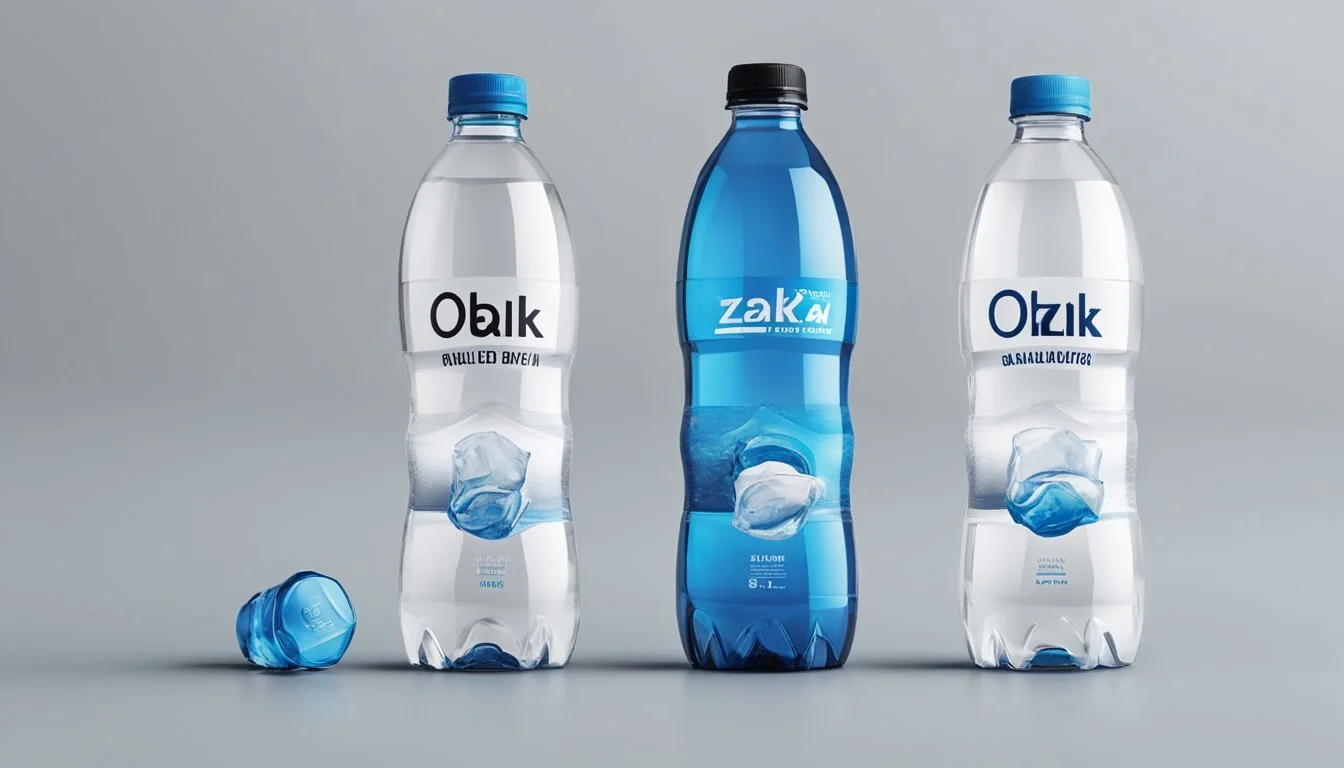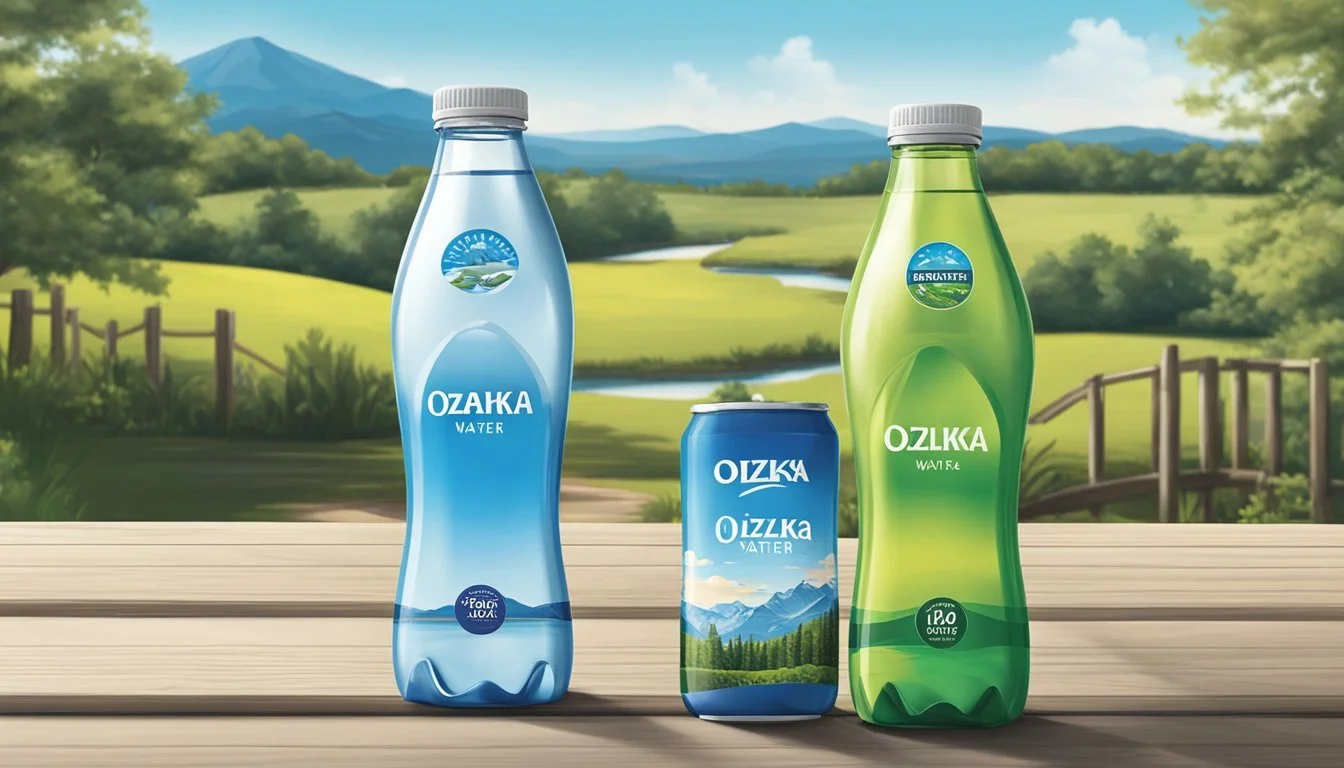Ozarka vs. Blk
Which Bottled Water is Better for You?
When it comes to choosing bottled water, the market offers a variety of options, with Ozarka and Blk standing out for distinct reasons. Ozarka sources its water from Texas, delivering a crisp and natural taste that many find refreshing. In contrast, Blk offers a unique twist with its black appearance, attributed to the fulvic minerals it contains, promising added health benefits.
For those seeking a natural and straightforward hydration option, Ozarka may be the better choice due to its trusted and locally sourced water. Conversely, Blk appeals to those curious about its unique look and potential health advantages, which set it apart from traditional bottled waters.
Understanding these differences is crucial for making an informed decision. Whether prioritizing taste, purity, or added health benefits, this comparison aims to provide clarity between two compelling bottled water options.
Understanding Bottled Water
Bottled water has become a staple for many due to its convenience and perceived quality. This section explores its history, types, regulations, and the influencing factors behind consumer demand.
History and Overview of the Industry
The bottled water industry traces its origins back to the 18th century when mineral springs were first commercialized. Companies packaged water in glass bottles and marketed it as a health product. With advancements in bottling technology and the introduction of plastic bottles in the 20th century, the industry expanded rapidly.
Today, the global bottled water market includes a variety of players, from large multinational corporations to small regional brands. This diversification provides consumers with a wide range of choices in terms of source, taste, and price.
Types of Bottled Water
Bottled water is categorized into several types based on its source and treatment methods. The main types include:
Spring Water: Sourced from underground formations and naturally flows to the surface.
Mineral Water: Contains a certain level of dissolved minerals and must come from a geologically protected source.
Purified Water: Processed to remove impurities through methods like distillation or reverse osmosis.
Artesian Water: Derived from a confined aquifer.
These types vary in mineral content and taste, impacting consumer preference.
Bottled Water Regulations
The bottled water industry is subject to stringent regulations to ensure safety and quality. In the United States, the Food and Drug Administration (FDA) oversees bottled water standards. These regulations cover aspects like labeling, contaminant limits, and the adequacy of treatment processes.
Internationally, bottled water must comply with local regulations, which may be managed by various health and safety agencies. Compliance ensures that bottled waters meet acceptable quality standards, protecting consumer health.
Consumer Demand and Preferences
Consumer preferences for bottled water are influenced by multiple factors:
Taste: Variations in mineral content and source can lead to distinct flavors.
Health Perceptions: Some consumers believe bottled water is safer or healthier than tap water.
Convenience: The portability of bottled water makes it an easy hydration option.
Brands also capitalize on sustainability trends by offering recyclable or eco-friendly packaging. Price points vary, with options ranging from affordable to premium, catering to different consumer segments.
Analyzing Water Quality and Purity
Ozarka and Blk are two distinct bottled water brands with unique approaches to quality and purity. Both brands comply with industry standards, but their methods and benefits can vary significantly.
Quality and Safety Standards
Ozarka sources its water from springs in Texas, adhering to stringent safety standards. The brand emphasizes natural spring water with a commitment to quality.
Blk, on the other hand, distinguishes itself with reverse osmosis and purification processes, which involve advanced filtration techniques. This process ensures the removal of impurities and heavy metals like lead and arsenic. Moreover, Blk conforms to the International Bottled Water Association (IBWA) standards, often exceeding governmental requirements.
Brand Source Key Processes Ozarka Texas Springs Natural Spring Water Blk Various Sources Reverse Osmosis, Purification
Hydration and Health Benefits
Ozarka offers a balance of essential minerals due to its natural spring sources. These minerals may enhance the taste and provide subtle health benefits, supporting hydration and electrolyte balance.
Blk water is infused with fulvic minerals, which give it a dark appearance. These minerals are rich in electrolytes, potentially offering superior hydration. The brand promotes its ability to boost energy levels and support cellular function.
Both brands aim to provide clean and safe drinking water, though their distinct features cater to different consumer preferences.
Common Contaminants in Bottled Water
Contaminants like PFAS chemicals, microplastics, and heavy metals are significant concerns in the bottled water industry. Both Ozarka and Blk take measures to minimize these impurities.
Ozarka's natural filtration through geological formations aids in reducing impurities naturally. Regular testing ensures low levels of contaminants like lead and arsenic.
Blk’s comprehensive purification process focuses on eliminating a range of potential contaminants. The advanced techniques target heavy metals and other harmful substances, aiming for the highest purity levels.
Contaminant Ozarka Handling Blk Handling PFAS Natural Filtration Advanced Filtration Techniques Lead Regular Testing Reverse Osmosis Arsenic Geological Filtration Multiple Purification Stages
Sourcing and Types of Water
Ozarka and Blk bottled water brands offer distinct experiences due to their differing sources and types of water. Exploring these elements provides insights into their unique characteristics and appeals.
Natural Spring Vs. Purified Vs. Mineral Water
Ozarka sources its water from natural springs located in Texas. This natural spring water is often prized for its purity and balanced mineral content, offering a refreshing taste.
Blk differentiates itself by offering purified water with added fulvic trace minerals. These minerals give the water its distinctive black color and unique wellness benefits. While Ozarka relies on the natural spring source for its taste and mineral balance, Blk's water is purified and enhanced to create a distinct product.
The Source of the Water
Ozarka’s water is primarily drawn from groundwater sources in natural springs across Texas. These springs are carefully managed to ensure they remain sustainable and maintain their natural integrity.
Blk's water, on the other hand, starts as purified water, sourced from various local suppliers. It is then enhanced with fulvic minerals, which are derived from plant-based organic matter. This process results in a unique product that stands out due to its color and reported health benefits.
Sustainability of Water Sources
Sustainability is a key consideration for both brands. Ozarka emphasizes the responsible management of their spring sources, prioritizing environmental impact and long-term resource availability. They aim to ensure that their water sources are not over-exploited and that they remain pristine for future generations.
Blk's approach to sustainability includes sourcing its water locally, reducing transportation emissions. Additionally, the inclusion of fulvic minerals does not significantly impact natural resources, providing a sustainable way to enhance water. Both brands highlight a commitment to environmental responsibilities, albeit through differing methodologies.
Brand Comparison: Ozarka Versus Blk
This section provides a detailed comparison between Ozarka and Blk, highlighting important aspects such as company profiles, product varieties, consumer reviews, environmental concerns, and pricing.
Company Profiles and Historical Background
Ozarka sources its water from springs in Texas, focusing on providing natural spring water. Established in 1905, it emphasizes its local heritage and long-standing reputation in the bottled water industry.
Blk water, by contrast, is a newer entrant, known for its unique black color derived from fulvic trace minerals. It was launched in recent years with a modern appeal, targeted towards health-conscious consumers.
Product Range and Varieties Offered
Ozarka offers a range of sizes, from small personal bottles to large gallon containers. It primarily focuses on natural spring water without added minerals.
Blk also offers a variety of sizes but stands out with its black-colored water and added fulvic minerals. Blk has several variations, including flavored options, making it distinct from traditional bottled water brands.
Taste Profiles and Consumer Reviews
Consumers often describe Ozarka’s taste as clean and crisp, likely due to its spring water origin. It is noted for being refreshing without any distinct aftertaste.
Blk water’s taste is influenced by its high mineral content. Some consumers appreciate the unique taste profile and health benefits, while others find its earthy flavor less appealing. Consumer reviews are polarized, reflecting personal preference.
Packaging and Environmental Concerns
Ozarka uses traditional plastic bottles, offering some products in recycled plastic to mitigate environmental impacts. The brand has initiatives to reduce plastic waste, though challenges remain.
Blk also uses plastic bottles but emphasizes eco-friendly packaging. The brand's focus is on sustainability, with efforts towards using recycled materials and reducing their environmental footprint.
Price Point and Accessibility
Ozarka is widely available and considered affordable, making it accessible to a broad market. Its competitive pricing aligns with its commitment to providing hydration options for everyday consumers.
Blk is positioned as a premium product, often priced higher due to its distinct fulvic mineral additives. While it is accessible in various regions, its specialized nature targets consumers willing to invest in perceived health benefits.
Health and Safety
When comparing Ozarka and Blk bottled water, it's crucial to examine their electrolytes, mineral content, and potential health risks from contaminants. Each brand's water quality and composition directly impact health and safety standards.
Electrolytes and Mineral Content
Ozarka sources its water from Texas springs, ensuring a natural mineral composition. It typically contains essential minerals such as calcium, magnesium, and potassium, which are beneficial for hydration and overall health.
Blk water, in contrast, is known for its unique black color, which results from fulvic minerals. These minerals not only give the water its distinctive hue but also provide trace amounts of essential electrolytes. Fulvic minerals are promoted for their potential health benefits, including improving nutrient absorption and enhancing detoxification.
Both brands have pH levels that vary slightly. Ozarka generally maintains a neutral to slightly alkaline pH level, making it suitable for daily consumption. Blk water is often marketed with an alkaline pH due to the presence of fulvic minerals, which can aid in neutralizing body acidity.
Health Risks Associated with Contaminants
Ozarka complies with stringent safety standards, ensuring that its water is free from harmful contaminants. Regular testing is performed to detect any potential impurities, maintaining a high level of transparency about its water quality.
Blk water, relying heavily on its distinctive mineral content, also adheres to rigorous safety protocols. However, concerns sometimes arise regarding the unknown long-term effects of consuming water with high fulvic mineral content. While no harmful contaminants have been associated directly with Blk water, the unusual composition warrants caution for individuals with specific health conditions.
Both brands ensure that their packaging materials meet safety standards to avoid leaching harmful substances into the water. Ensuring the absence of contaminants and maintaining clean and safe packaging are vital for consumer health and safety.
Environmental Impact and Sustainability
Ozarka and Blk bottled waters have varying environmental impacts, particularly in how they manage their carbon footprint, plastics usage, and eco-friendly initiatives. This section examines the key aspects affecting the sustainability of these bottled water brands.
Water Bottling Process and Carbon Footprint
Ozarka sources its water from springs in Texas and undergoes standard purification processes. The transportation and bottling procedures contribute to its carbon footprint.
Blk water, known for its distinctive black color from fulvic minerals, also involves a specialized processing method. The unique bottling process may have varying energy requirements compared to traditional methods.
Both brands face challenges in minimizing emissions related to production and distribution.
Plastics Use and Recycling Initiatives
Ozarka packages its water in plastic bottles, contributing to plastic waste. While it has made efforts to use recycled plastics, a significant portion still relies on single-use plastic.
Blk, similarly, utilizes plastic bottles for its product, posing environmental concerns. The brand has promoted recycling programs and the use of recycled materials in its packaging.
Consumers are encouraged to engage in proper recycling practices to mitigate plastic waste.
Eco-Friendly Practices in the Water Industry
Ozarka has initiated various eco-friendly practices. These include efforts to use lighter bottles, reducing plastic usage, and funding conservation projects.
Blk water emphasizes its commitment to sustainability through educational campaigns and partnerships aimed at environmental protection.
Both brands are navigating the balance between product quality and ecological footprint, with continued innovations in sustainability practices.
Legislation and Industry Standards
Regulations governing bottled water such as Ozarka and Blk ensure their safety, quality, and compliance with both domestic and international standards. Key points include adherence to FDA and environmental guidelines and the influence of organizations like the International Bottled Water Association.
International and Domestic Regulations
Bottled water regulations differ internationally and domestically. In the United States, the FDA governs bottled water, establishing standards that match or exceed those set by the EPA for tap water. Internationally, countries have their own regulatory bodies and frameworks. Ozarka and Blk both comply with these regulations to ensure safety and maintain market access.
Compliance with FDA and Environmental Guidelines
The FDA sets strict guidelines for bottled water safety, requiring regular testing for contaminants like lead and arsenic. Both Ozarka and Blk must adhere to these guidelines to ensure their water is safe for consumption. Additionally, environmental guidelines focus on sustainable sourcing and packaging, impacting the operational practices of these brands.
Role of International Bottled Water Association
The International Bottled Water Association (IBWA) is key in setting industry standards that often exceed regulatory requirements. The organization’s Code of Practice includes guidelines on safety, quality, and sustainability. Membership in the IBWA ensures that brands like Ozarka and Blk are committed to the highest industry standards, influencing their production and quality control processes.
Consumer Insights and Future Trends
Consumer preferences in the bottled water industry are shifting towards healthier hydration options. Innovation in bottling technology continues to impact brand competitiveness, while sustainability increasingly influences consumer choices.
Shifting Consumer Preferences
Consumers are actively seeking healthier hydration choices. Increased awareness about health and wellness drives this trend. Bottled water brands like Ozarka and Blk are tapping into this demand. Blk water, known for its fulvic trace minerals, appeals to those interested in added health benefits.
Consumers are also paying more attention to the mineral content and purity of the water they drink. Preferences are evolving with a greater emphasis on health impacts, influencing purchasing decisions.
Innovation and Technological Advancement in Bottling
Innovation in bottling is crucial for brands to stay competitive. Advances in filtration, purification, and bottling processes enhance water quality and safety. Ozarka uses advanced purification methods to ensure high quality, while Blk incorporates unique technology to infuse water with minerals.
Technological advancements also extend to packaging. Brands are experimenting with materials that improve shelf life and convenience. This innovation plays a vital role in meeting consumer expectations and maintaining market presence.
The Future of Bottled Water in a Sustainability-Oriented World
Sustainability is becoming a key factor in the bottled water industry. Consumers are growing more conscious of the environmental impact of their purchases. They favor brands that prioritize eco-friendly practices. Ozarka, for instance, is taking steps to reduce its environmental footprint.
Innovations in sustainable packaging, such as biodegradable bottles and reduced plastic usage, are gaining traction. Companies are investing in recycling programs and alternative materials to meet this demand. The shift towards sustainability will likely shape the future landscape of the bottled water market.
More About Ozarka
Mountain Valley Spring Water vs Ozarka: Which Bottled Water is Better?
Ozarka vs Kirkland Signature: Which Bottled Water is Better?
Ozarka vs Richard's Rainwater: Which Bottled Water is Better?
Ozarka vs Whole Foods Italian Still Mineral water: Which Bottled Water is Better?






